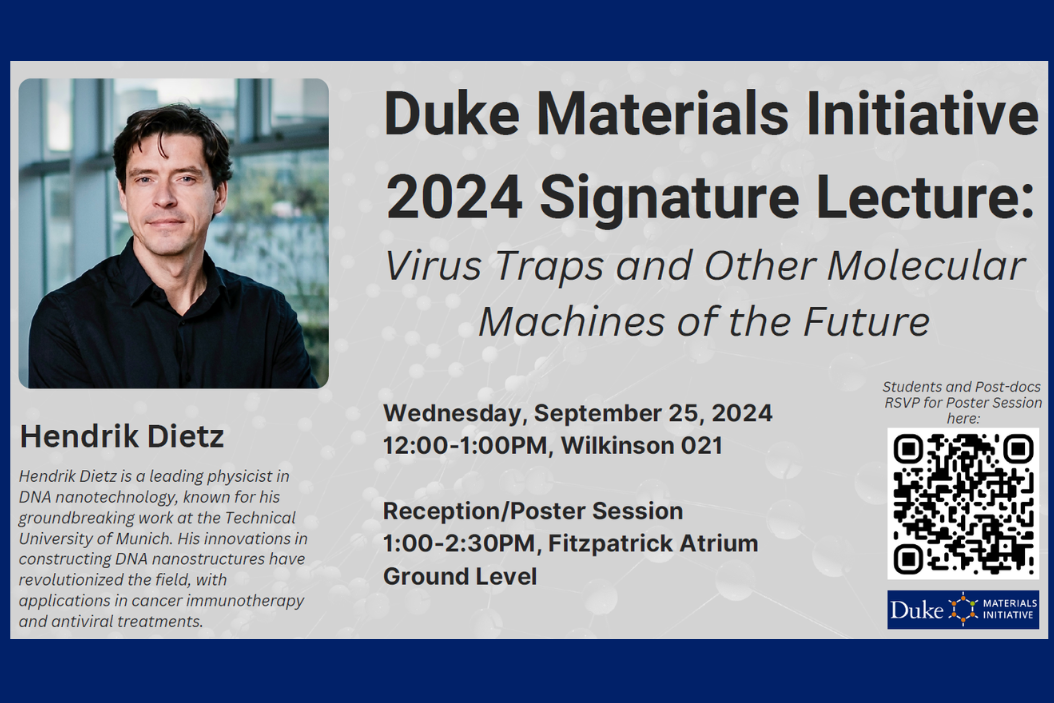Event sponsored by:
Duke Materials Initiative
Biology
Biomedical Engineering (BME)
Cell Biology
Chemistry
Civil and Environmental Engineering (CEE)
Electrical and Computer Engineering (ECE)
Fitzpatrick Institute for Photonics (FIP)
Mathematics
Mechanical Engineering and Materials Science (MEMS)
Nicholas Institute for Energy, Environment and Sustainability
Physics
Pratt School of Engineering
Contact:
Liana Igescu
Speaker:
Prof. Hendrik Dietz
Abstract: Our research is focused on understanding and creating molecular devices and machines that can perform specific tasks as directed by users. We draw inspiration from natural macromolecular assemblies such as viruses and molecular motors and seek to implement similar principles in synthetic molecular machinery. We use both DNA origami and de-novo protein design in our research. Our efforts have lead to several interesting accomplishments:
(1) By studying viruses, we have successfully programmed DNA blocks to self-assemble into icosahedral shells, which have potential applications as programmable antiviral drugs and vaccine carriers. (Wagenbauer et al, Nature 2017; Sigl et al, Nature Materials 2021)
(2) We have developed DNA origami structures capable of carrying genetic instructions that can be read by mammalian cells. This opens up possibilities for a wide range of applications, including gene therapy and targeted drug delivery. (Kretzmann et al, Nature Comms 2023, Liedl et al, JACS 2023)
(3) We have constructed nanoscale assemblies with controllable movements, such as autonomous, power-generating rotary DNA motors and turbines driven by ion flux across membranes. These machines offer potential for executing energy-consuming tasks in synthetic cells. (Pumm et al, Nature 2022, Shi et al, Nature Nanotech 2023)
(4) We have built up and validated a novel computational protein design pipeline that enables building arbitrary shapes using protein backbones, which we intend to pair up with DNA scaffolds to create multifunctional objects, such as advanced therapeutic vehicles. (Frank et al, submitted)